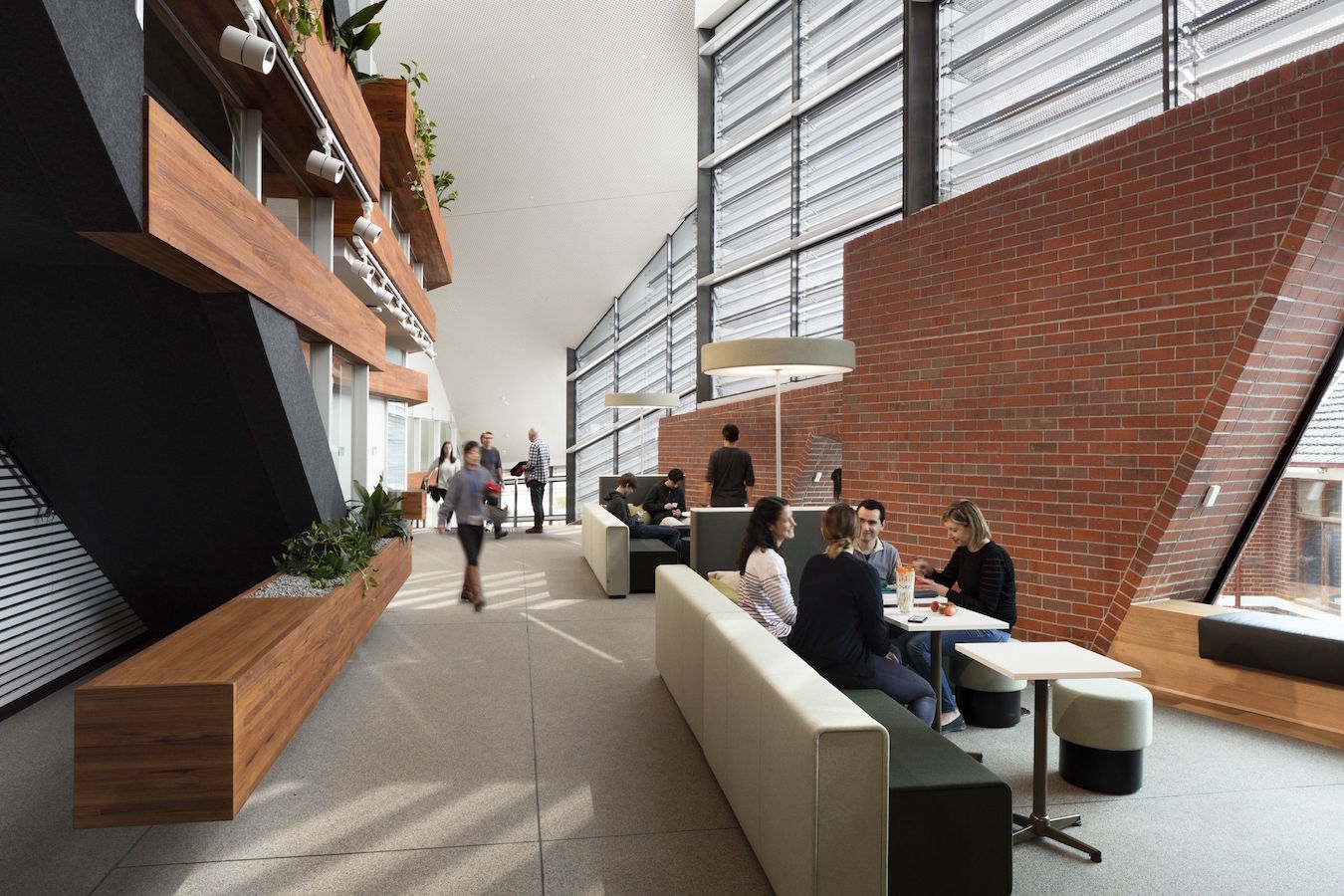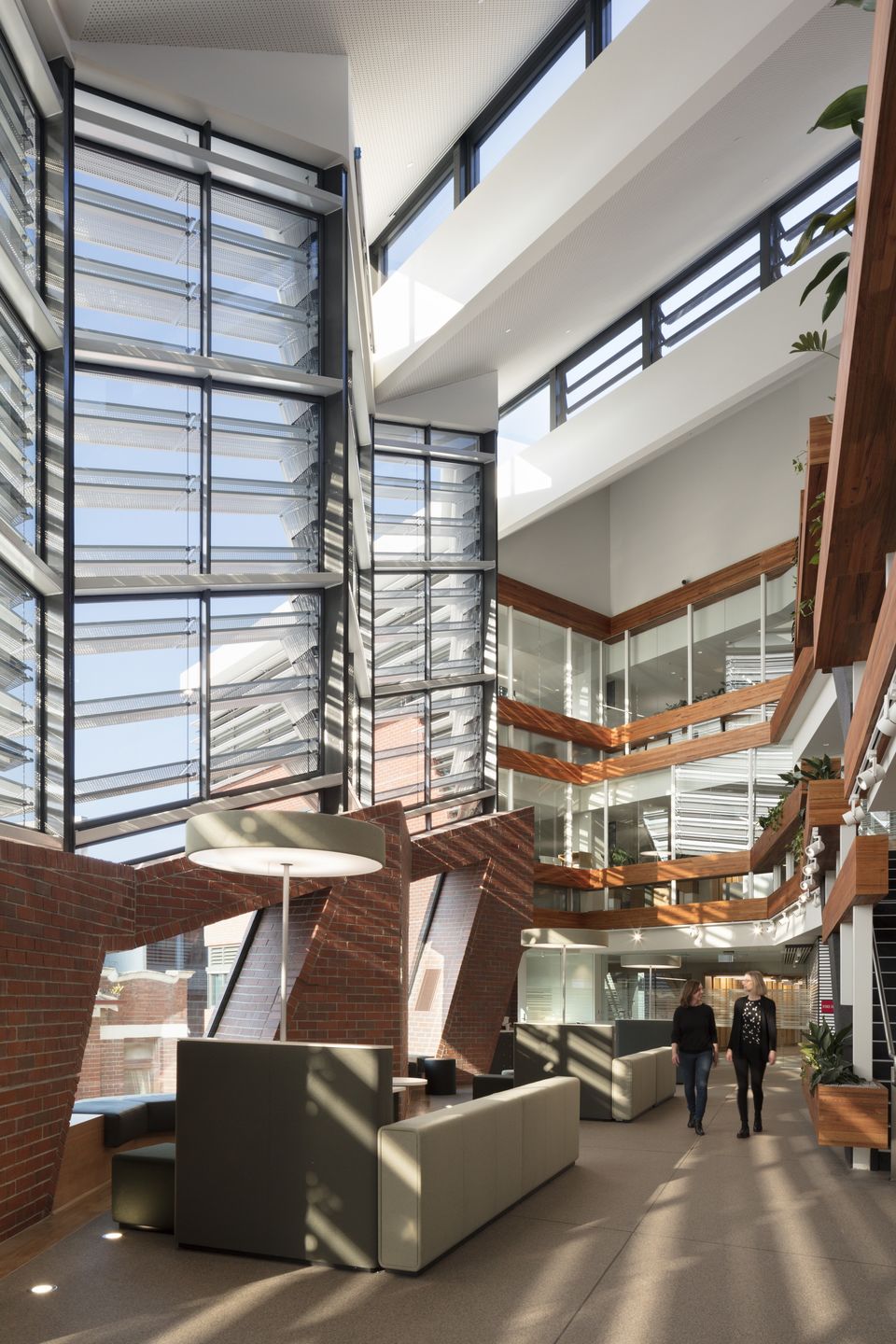
One of the largest biotechnology research centres in Australia, the Bio 21 Nancy Millis Building is a healthy workplace designed to encourage employee collaboration.
The building comprises laboratories, offices and collaborative spaces for research, training and industry engagement. It occupies a tight site, surrounded by a number of existing buildings.
In response to its context, the architects designed a structure firmly embedded in a sequence of landscaped external courtyards with a tapering brick base that steps upwards, uncurling to a two-storey height.

Connection to the natural environment is an important element of the building’s design.
“Our overall concept emphasises the benefits of a connection with nature to wellbeing by clearly articulating a design that integrates natural light, airflow, greenery and views to the outdoors,” says DesignInc director Christon Batey-Smith.
“It was also important this connection to nature not be static, so there’s variety in the building’s volumes and spaces, all of which contribute to a sense of discovery that’s integral to any type of research centre.”

Internally, the entry leads to the primary circulation which curves upwards towards a multi-level collaboration forum. This generous volume expresses key elements of biophilic design in featuring plenty of natural light, good airflow, views to the outdoors and a series of timber planter boxes.
The forum is the building’s focal point, intended to support the wellbeing of the Institute’s researchers and other end users by giving them a collaboration-focused place to work outside of the lab. It offers meeting rooms, breakout spaces, terraces and stepped seating before ascending to the south, where a range of highly controlled laboratories and offices provide flexible areas for research and specialist and general support spaces.

“It’s about this idea of wellbeing and improving outcomes through the creation of a series of spaces where researchers can collaborate,” says Batey-Smith.
“We want the researchers to have a choice of settings in which to work and we want to improve their experience outside of the lab too.”
The facility has achieved a targeted education 5 Star Green Star rating from the Green Building Council of Australia.

